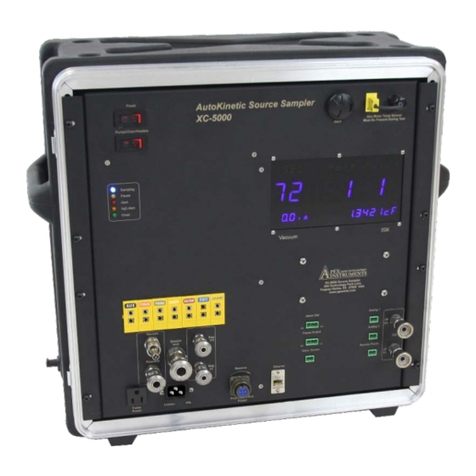
Additional Important Information
Apex Instruments manufactures and sells its products under the foregoing terms and conditions and will not be
bound to terms and conditions stated by any purchaser in any offer, acceptance or other contractual document.
Placing an order or accepting delivery of products constitutes acceptance of terms and conditions.
Product Limited Warranty Policy
Repair Services Limited Warranty Policy
Some states do not allow disclaimers of implied warranties. Therefore, all implied warranties that may apply to the
component are limited to the duration of this written warranty. Some states also do not allow limitations on how
long an implied warranty lasts or the exclusion or limitation of incidental, special or consequential damages, so the
above information may not apply. This warranty provides specific rights, and there may be other rights which vary
from state to state. Apex Instruments, Inc does not authorize any entity to vary the terms, conditions or exclusions
of this warranty. If any provision of the warranty should become invalid or unenforceable because of any laws, the
remaining terms and provisions of the warranty shall remain in full force and effect. To the extent allowed under
local law, the remedies provided in this Limited Warranty Policy are the purchaser's sole and exclusive remedies.
Apex Instruments, Inc., 204 Technology Park Lane, Fuquay-Varina, NC 27526. Visit us on the web at
www.apexinst.com
Apex Instruments, Inc. warrants products to be free from defects in materials and workmanship for a period of one
year from date of delivery. During the warranty period, we will repair or replace, at our option, any component that
fails due to a defect in materials or workmanship under normal use excluding installation. Items not manufactured
by Apex Instruments are subject to original manufactures warranty. All returns must be shipped freight prepaid at
the purchasers' expense.
Customer is responsible for decontamination of all equipment returned to Apex Instruments. Apex Instruments
reserves the right to return or decontaminate any equipment deemed unsafe or contaminated at the customers
expense.
Contamination
Apex Instruments makes no other warranties, express or implied, including any warranties of merchantability,
condition of any kind or fitness for a particular purpose.
This limited warranty represents the exclusive remedy for any component defect or failure and the total liability of
Apex Instruments for any component it warrants.
Acceptance of Terms and Conditions
Warranty Policy
What is Not Covered
Apex Instruments, Inc. warrants repairs to be free from defects in materials for a period of one year and
workmanship for a period of 90 days from date of delivery. During the warranty period, we will repair any item
Apex Instruments repaired or replaced that fails due to a defect in materials or workmanship under normal use.
Accidents, misuse, abuse and modifications. All forms of corrosion or other environmental conditions including
lightning, natural disasters, improper installation and installation of an incorrect part. Normal wear and tear, used
or salvage parts installed and shipping damage.
This limited warranty does not cover labor cost or incidental, indirect, special or consequential damages such as,
but not limited to, psychical injuries or property damage, loss of time, loss of use of the component,
inconvenience, rental equipment charges, or accommodations resulting from a defect in or failure of the
component. You must be the original purchaser of the component, warranty is not transferrable.
Service Request
For warranty repairs, calibrations or technical support please contact our service department at 919-557-7300.
The service department will issue you a service request number for you to attach to your product when shipping
back to Apex Instruments. All items must be shipped freight prepaid at the purchasers' expense.
VSC-33
APEX INSTRUMENTS, INC.




























